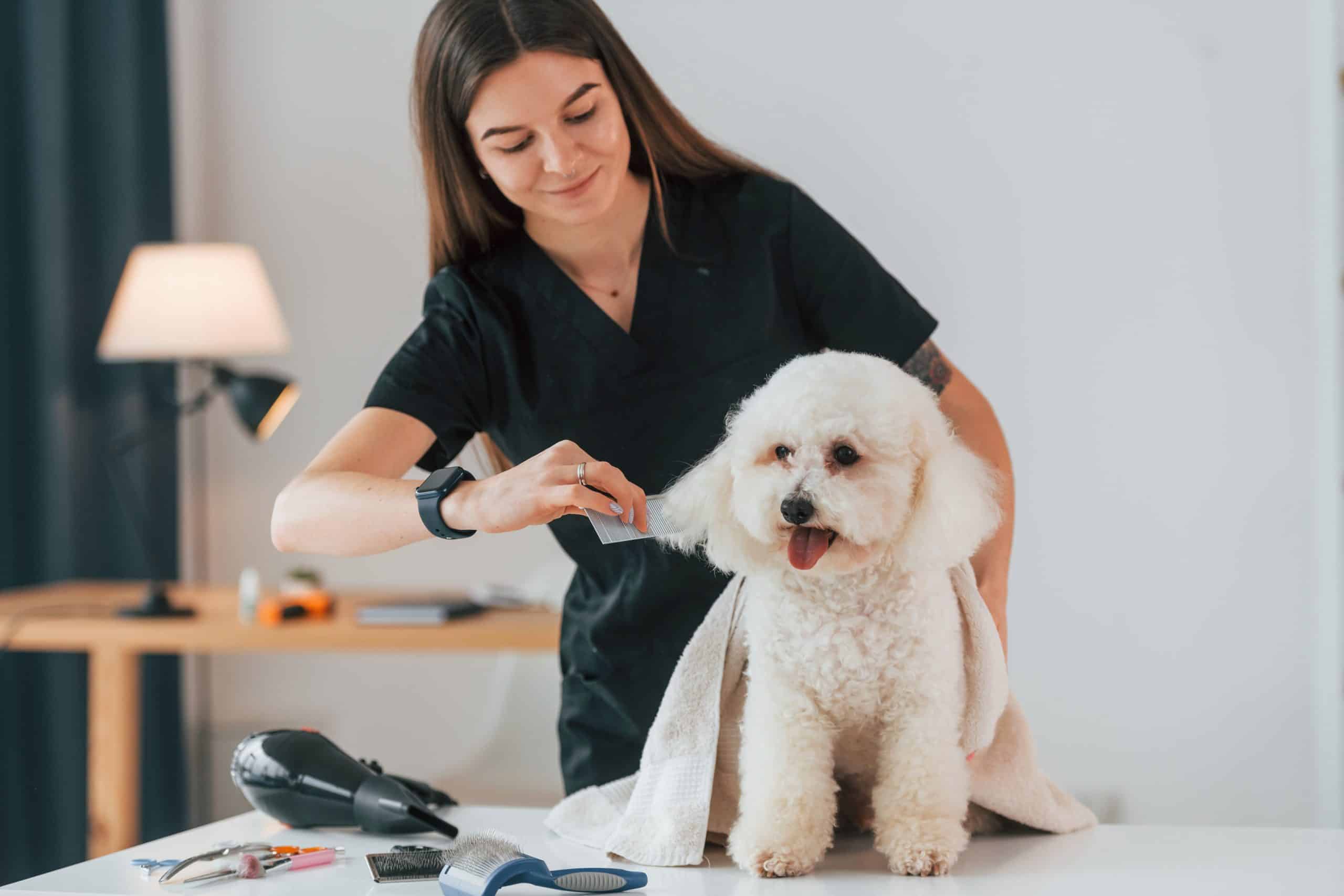Caring for your Persian cat requires a class of its own as these felines are known for their long, gorgeous fur and adorable flat faces. However, these same traits that make them so appealing also lead to specific grooming challenges. One such challenge is the tear stains that often occur in the fur around their eyes. This article will guide you on the best practices to groom your Persian cat’s face, particularly, how to prevent and manage tear stains.
Understanding Tear Stains in Persian Cats
Firstly, let’s delve into understanding what tear stains are and why they occur. Tear stains are a common occurrence in many breeds of cats, but they are particularly noticeable in Persian cats due to their long, white fur. These stains occur when the cat’s tear ducts produce excessive tears, which then trickle down their face, causing a reddish-brown stain on their fur.
A lire en complément : How to Choose the Correct UV Lighting for a Pet Bearded Dragon’s Enclosure?
Tear stains can be a nuisance for pet owners as they detract from the beauty of your Persian cat’s face. Also, if not adequately managed, they can lead to skin irritation and infections. Understanding the cause of these stains can guide you in preventing and managing them.
Grooming Techniques to Prevent Tear Stains
Preventing tear stains begins with a good grooming regimen. For Persian cats, grooming is not a luxury, but a necessity. Their long hair and sensitive skin require special care. Here are some grooming techniques that you will find instrumental in preventing tear stains.
En parallèle : What’s the Ideal Setup for a Quarantine Area When Introducing New Reptile Pets?
Regular Cleaning
Regular face cleaning is the first step to prevent tear stains. Wipe your cat’s face every day with a warm, moist cloth to remove any tear buildup. Make sure to thoroughly clean the fur around the eyes, taking care not to make contact with the eyes themselves. You can follow the cleaning with a dry towel to soak up any residual moisture.
Bear in mind, cats are sensitive creatures, and Persian cats are no different. Use gentle strokes and speak softly to your cat during the grooming process to make it a pleasant experience.
Use of Tear Stain Removers
Various tear stain removers in the market can help to lighten and remove stains on your Persian cat’s fur. These removers are generally safe for use around the cat’s face. However, always ensure to read the product’s instructions and avoid getting the product in the cat’s eyes.
When using a tear stain remover, use a cotton ball or pad soaked in the solution and gently wipe the stained area. Remember to always test a small area first to ascertain that your cat will not have an adverse reaction to the product.
Eye Care for Persian Cats
While general face grooming is crucial, particular attention needs to be given to the care of your Persian cat’s eyes. Their unique facial structure often leads to blocked tear ducts, leading to excessive tearing.
Regular Eye Checks
Regularly check your Persian cat’s eyes for any visible signs of irritation or abnormal tear production. If you notice anything unusual, like excessive tearing, redness, or your cat rubbing their eyes, it might be time to visit the vet.
Frequent Eye Cleaning
Apart from the daily face cleaning, your Persian cat’s eyes need a cleaning routine of their own. Use a clean, moist cloth or cotton ball to gently clean around the eyes, removing any tear buildup. Be sure never to use soap or shampoo near your cat’s eyes as it can cause irritation.
Maintaining a Healthy Lifestyle for Your Persian Cat
While grooming and eye care are essential in preventing tear stains, maintaining a healthy lifestyle for your Persian cat is just as important. A healthy cat is less likely to produce excessive tears.
Adequate Hydration
Cats need to stay hydrated for their bodies to function optimally. Ensure your cat always has access to fresh, clean water. Dehydration can lead to excessive tear production, resulting in tear stains.
Balanced Diet
A balanced diet contributes to overall cat health, including eye health. Ensure your Persian cat is eating a balanced diet rich in essential vitamins and minerals. Some cat foods are specially formulated for breeds like Persians and might be a good option to consider.
By following these steps diligently, you can significantly reduce and even prevent tear stains on your Persian cat’s face. Always remember, the key to healthy eyes and clear, stain-free fur is regular grooming and a healthy lifestyle. Your Persian cat is a special pet, and it deserves the best care you can provide.
Potential Reasons for Excessive Tearing in Persian Cats
In order to effectively combat tear stains in Persian cats, it’s important to understand the potential causes of excessive tearing. Persian cats are known for their flat faces and large, expressive eyes. However, their unique facial structure can sometimes lead to blocked tear ducts, causing excessive tear production, and consequently, tear stains.
One common cause of excessive tearing is congenital abnormalities. Some Persian cats are born with narrow or misshapen tear ducts, which can lead to increased tear production. Other potential causes include irritation from dust or allergens, infections, or injuries to the eye.
Persistent irritation or allergies can also contribute to excessive tearing. Persian cats can be sensitive to certain types of cat litter, cleaning products, or airborne allergens. If your cat is frequently exposed to these irritants, they may develop an allergic reaction, resulting in increased tear production.
Lastly, eye infections or corneal ulcers are other possible causes of excessive tearing in Persian cats. If your cat has an eye infection, you may notice other symptoms such as redness, swelling, and discomfort. In these instances, it’s crucial to seek immediate veterinary care.
Treating and Preventing Excessive Tearing in Persian Cats
Knowing the potential causes of excessive tearing, we can now delve into the steps you can take to treat and prevent this issue, thus preventing tear stains.
If an underlying health condition is causing excessive tearing, treatment from a vet is crucial. Your vet can provide specific treatment based on the condition, which may include antibiotics for an infection, or surgery for congenital abnormalities.
For allergies or environmental irritants, try to identify and remove the allergen. Switching to a hypoallergenic cat litter, using unscented cleaning products, and maintaining a clean environment can reduce the likelihood of allergies and irritation.
Regular vet check-ups will also help in early detection and treatment of any conditions that may lead to tear stains. Your vet can perform a thorough examination of your Persian cat’s eyes and recommend a suitable treatment plan if necessary.
Conclusion: The Importance of Diligent Grooming and Care
Caring for a Persian cat requires a thorough understanding of their unique grooming needs and potential health concerns. Tear stains, resulting from excessive tear production, are a common issue that can detract from their adorable appearance and potentially lead to skin irritation and infections.
Appropriate grooming techniques, coupled with diligent eye care and a healthy lifestyle, can significantly reduce the occurrence of tear stains. Regular cleaning, use of tear stain removers, regular vet check-ups, and a balanced diet are all instrumental in this process.
Remember, the key to managing tear stains in your Persian cat is regular grooming and preventive care. Your Persian cat is a special pet that deserves the best care, and in return, its beauty and companionship will be a joy to behold.






